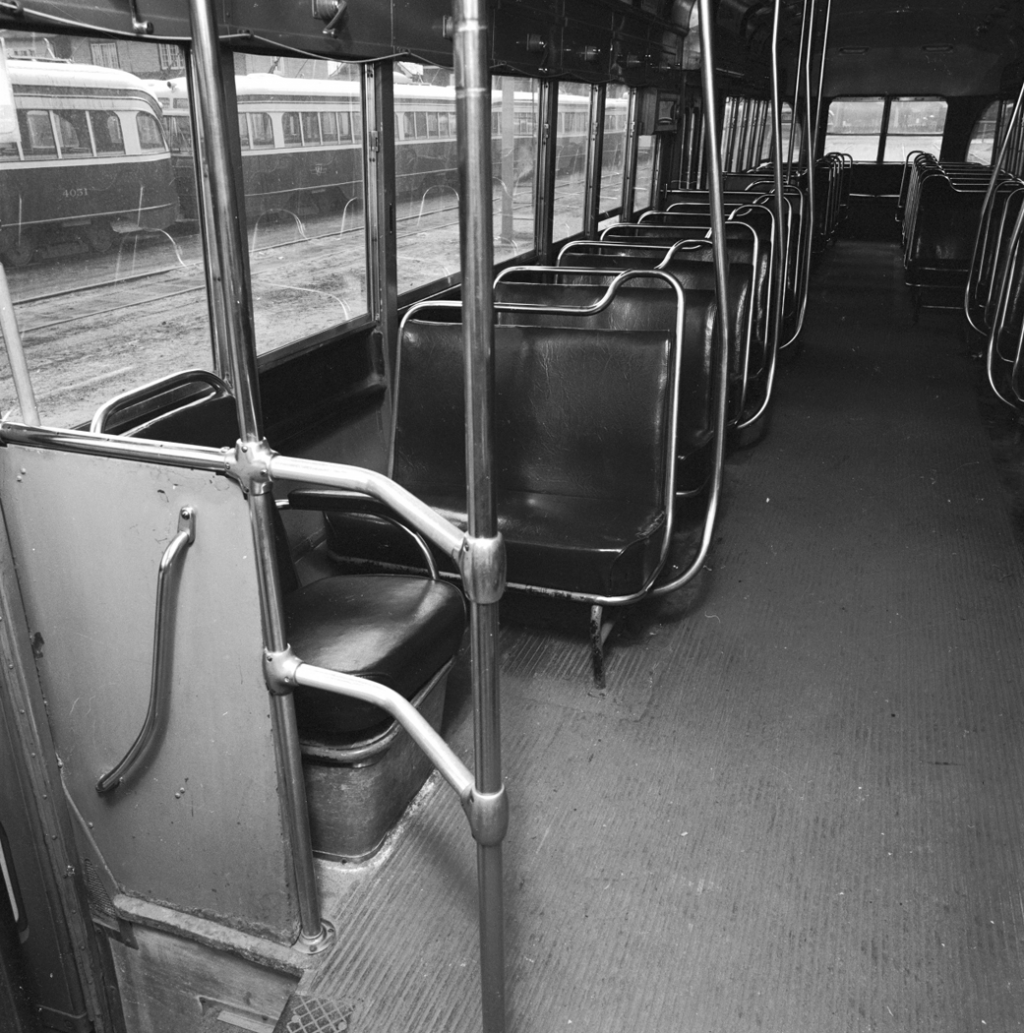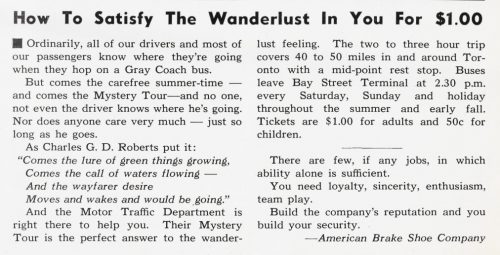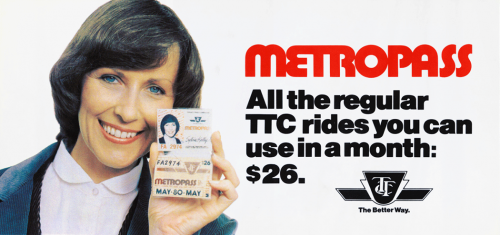
Before PRESTO, access to the TTC would be gained through the use of a cash fare, a ticket, a token, or the Metropass. The tickets for both the Toronto Transit Commission and Gray Coach Lines could be used for anywhere on one line, or for a specific destination, and some tickets were specific to an age group.
Historically, children’s fares have been based on the height of the child. In 1921 a child’s fare was allowed for any child under 51″ in height. The use of 51″ was approved by the Commission upon a review of statistics for average children’s size. In 1942 this was increased to 53 ½” upon another review of statistics for the average height of boys and girls, aged 10. The height limit was again extended in 1960 to 56″, and in 1972 to 58″.
In 1973, children whose height exceeded 58″ could still use a child fare with proof of age.

On October 30, 1930, Eaton’s and Gray Coach Lines agreed that a shuttle bus would operate between the two Timothy Eaton Company department stores on Yonge Street. The fare would be three tickets for five cents. On October 31, 1942, the Transit Controller suspended this service due to the war; it resumed on June 4, 1945. Service was later operated with TTC buses, with Eaton’s paying the TTC for any deficits incurred. Service ended in 1972.
In addition to its intercity routes, Gray Coach Lines, a TTC subsidiary, also offered tour packages to see the City of Toronto. There were three potential tours. Tour one covered points of interest in Toronto, such as Queen’s Park, Casa Loma, and St. James Cathedral. Tour two covered areas of interest in the west end, such as High Park, the CNE, and Sunnyside Beach. Tour three was a motor launch tour of Toronto Island and its lagoons.
Gray Coach Lines Mystery tours were advertised as a journey somewhere outside the City of Toronto. No one, except for the driver, would know where they would go. This service operated on weekends and holidays only during the warmer months, and destinations were usually parks and small attractions within an hour or so of Toronto. This special service was offered from the 1950s to the 1980s.

The TTC and its subsidiary GCL played an important transportation role during the Second World War. GCL was instrumental in moving troops to and from the large Canadian Army and Royal Canadian Air Force base at Camp Borden, west of Barrie, Ontario. This special service was one of several that were inaugurated for the war.

Gray Coach Lines operated the Hill Route starting in 1925. One of several such routes operated by GCL, comfortable coaches moved people from their residences in North Toronto to the downtown core. The more-comfortable coaches, as opposed to city buses, were used for this service to entice people to leave their cars at home and use transit instead. Service was extended and rerouted over the years. Initially, the fare was 10 cents, and the Hill Route would terminate at Yonge and Temperance streets. By 1947 this route, along with the Mount Pleasant and High Park Coaches, would operate out of the Adelaide Coach Terminal, a short-lived off-street terminal built by the TTC on Adelaide Street just west of Yonge Street. The Hill Route, along with the other coach routes, were discontinued in late 1954 as much of the ridership had shifted to the new Yonge Subway.
Tokens were first introduced during the opening of the Yonge Subway line, to work in the new subway turnstiles, allowing faster entry to the subway platforms. While the Commission viewed the token as a time-saver, many TTC riders opted not to use them. To increase the use of tokens, the TTC decided to test token holders. The initial token holder was developed by Peter Storms and Company. Released in 1962, these paper strips were used to package tokens, and helped increase the sale and use of tokens by the riding public. The strips were advertised as being convenient and disposable.
On May 1, 1980, the monthly Metropass was launched, allowing unlimited fares for a calendar month. This was a major change to TTC fares, which had been primarily based on tickets and tokens, which offered a small discount from the cash fare. Reflecting the large core of dedicated TTC users that rode transit for more than just trips to and from work each weekday, the Metropass was priced at a premium that made it worthwhile for very frequent transit users. Within a decade, the Metropass was used for almost half of total TTC trips.
Originally the Metropass consisted of two parts: the pass, purchased monthly, and a photo identification card, which was reused. The pass and photo ID would be shown to station collectors and operators to gain entry to the system. By 1990 technology improved the Metropass. While still requiring the card and identification piece, the card could be easily swiped at a magnetically encoded turnstile to enter the subway system. In 2005 the Metropass was made transferrable. This meant that people could share a pass, and photo identification was no longer required for its use. In 2018 the Metropass was replaced by monthly passes encoded on a PRESTO fare card, and which could be easily reloaded each month.
